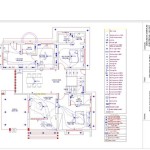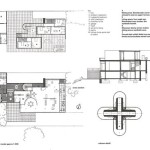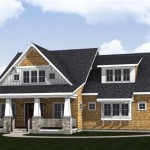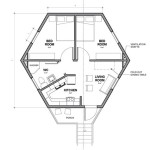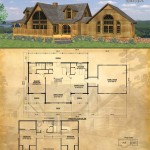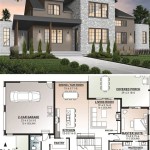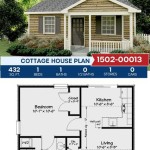Affordable Small House Plans
The rising cost of housing has made affordable living a significant concern for many. Small house plans offer a viable solution, providing comfortable living spaces without the hefty price tag of larger homes. These plans prioritize efficiency and smart design, maximizing every square foot to create functional and appealing homes.
A smaller footprint translates directly into lower construction costs. Less material is required for framing, roofing, and foundation work. This reduction in materials also contributes to faster build times, further minimizing labor expenses. The smaller scale also allows for more flexibility in choosing a building site, potentially opening up options for less expensive lots.
Beyond initial construction, the ongoing costs of owning a small house are typically lower. Smaller spaces require less energy to heat and cool, resulting in reduced utility bills. Maintenance is also simplified with less square footage to clean, paint, and repair. These long-term savings can significantly impact overall affordability.
Numerous resources are available for finding affordable small house plans. Online platforms offer a vast selection of pre-designed plans, often categorized by size, style, and budget. Architectural firms can also provide custom designs tailored to specific needs and preferences, though this option typically comes at a higher cost. Reputable builders often have a portfolio of standard plans they offer, providing a balance between customization and affordability.
When evaluating small house plans, careful consideration of the layout is crucial. Open floor plans are popular choices, creating a sense of spaciousness despite limited square footage. Multi-functional spaces, such as combined kitchen and dining areas, can further optimize the use of space. Strategic placement of windows and doors can maximize natural light and ventilation, reducing the need for artificial lighting and climate control.
Storage solutions are a key element in successful small house design. Built-in shelving, drawers, and under-stair storage can help keep belongings organized and out of sight. Vertical space should be utilized effectively, with tall cabinets and lofted sleeping areas. Minimizing clutter is essential for maintaining a comfortable and functional living environment.
Choosing the right materials can significantly impact the affordability of a small house. Opting for cost-effective materials like engineered wood or concrete blocks can reduce construction expenses without compromising structural integrity. Exploring sustainable and locally sourced materials can also offer cost savings and environmental benefits. Careful research and comparison shopping are crucial for making informed decisions about materials.
Before committing to a small house plan, it’s essential to consider lifestyle and future needs. The number of occupants, desired amenities, and potential future expansion should all be factored into the decision-making process. Consulting with a building professional can provide valuable insights and guidance throughout the planning stages.
Small house plans offer diverse architectural styles, from traditional cottages to modern minimalist designs. The chosen style will influence the overall aesthetic and can impact material choices and construction methods. Researching different architectural styles can help homeowners select a design that aligns with their personal preferences and budget.
Consider incorporating energy-efficient features into the small house plan. Proper insulation, energy-efficient windows, and solar panels can significantly reduce long-term energy costs. These features not only contribute to affordability but also promote environmental sustainability.
Local building codes and regulations play a significant role in the design and construction of small houses. Zoning restrictions may dictate the minimum size of a dwelling, setbacks from property lines, and permitted building materials. Obtaining the necessary permits and approvals is essential before commencing construction.
Financing a small house project often requires a different approach than traditional mortgages. Specialized lenders and loan programs may be available for smaller homes. Exploring alternative financing options, such as construction loans or personal loans, can provide the necessary funding to bring the project to fruition.
The trend towards minimalism and simpler living has contributed to the growing popularity of small houses. These homes offer a unique opportunity to prioritize experiences over possessions, fostering a more intentional and sustainable lifestyle. Downsizing to a smaller space can free up financial resources and reduce environmental impact.
The benefits of affordable small house plans extend beyond individual homeowners. Small house communities are emerging as a viable housing option, offering a sense of community and shared resources. These communities can provide affordable housing solutions while promoting sustainable living practices.
Building a small house can be a rewarding experience, providing a customized living space tailored to individual needs and preferences. Careful planning, thorough research, and informed decision-making are essential for ensuring a successful and affordable outcome. The rising popularity of small house living reflects a shift towards more conscious and sustainable living choices.

Inexpensive Contemporary House Small Plans Modern

How To Plan A Budget Friendly House Ideas By Mr Right
Est House Plans To Build Simple With Style Blog Eplans Com

Affordable Home Plans House Floor Adhouseplans Homeplans Houseplans Floo Small Plan

Small House Plan Ch9 With Affordable Building

Low Budget Small House Design Ideas

Low Budget Small House Design Ideas

Building Plans And Blueprints 42130 Affordable House Small Home 2 Bedroom Cottage 784

Affordable House Plans Our Est To Build Blog Homeplans Com

Low Budget Small House Design Ideas


